The standard stage is mostly for top-referenced, planar powder samples in sample holders. All stages, including ovens, are fitted to the goniometer hub on a dovetail mount, which is then clamped with a hand-tightened bolt (not too tight!).
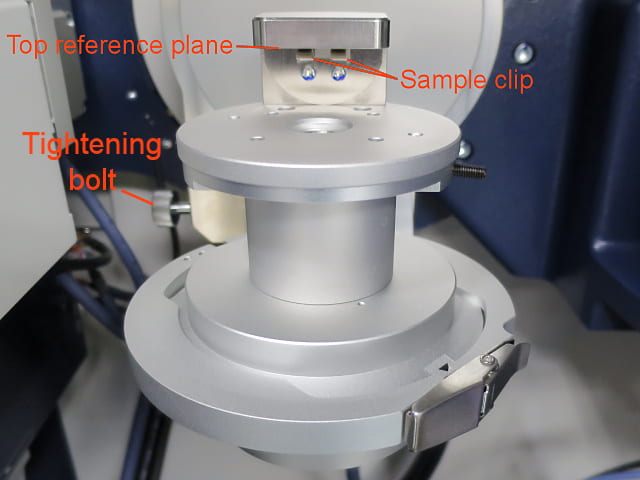
This shows the assembled standard stage mounted on the goniometer hub. Flat samples are held against the top reference plane by sample clips. Sample holders are designed to put the sample at the hub axis, and the right distance out from the clips, provided the holder is pushed against the back of the clip assembly.

The standard stage has three basic parts.
- The base, which has the mounting dovetail and connection cable.
- The middle part, which is held onto the base with a split-ring clamp.
- The top, which holds the top-referenced sample clip. The top fits on the middle part, and is rotated to a locked position.
- Like all stages, the cable has to be plugged in to the port inside the XRD.
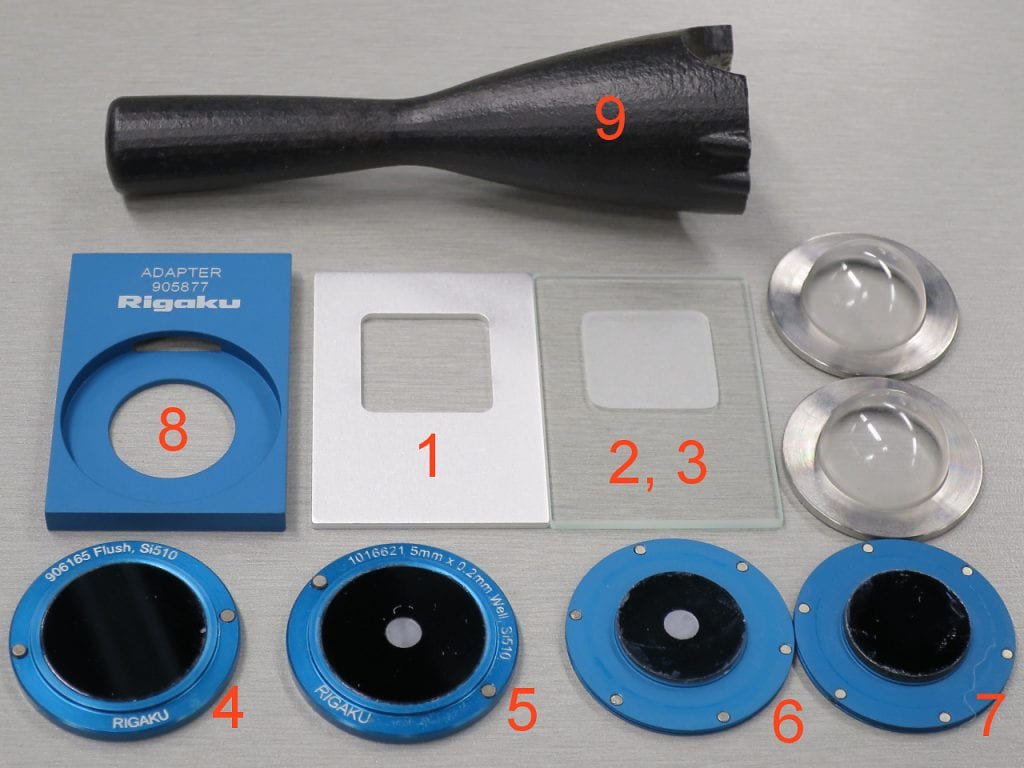
These are the sample holders that came with the instrument. There aren’t many, and more of the most used ones will have to be purchased, or made at the shop.
- Aluminum, well has no bottom. Why anyone thought this was a good idea is beyond me. Instead, try having these made at the shop.
- Glass, 0.2 mm deep wells. These may also be made out of aluminum or strong plastic at the shop.
- Glass, 0.5 mm deep wells. These may also be made out of aluminum or strong plastic at the shop.
- Zero-diffraction silicon, for scattered powder.
- Zero-diffraction silicon, with 5 x 0.2 mm well.
- Zero-diffraction silicon, with 5 x 0.2 mm well, for air-sensitive samples (plastic caps to upper-right).
- Zero-diffraction silicon, for scattered powder, for air-sensitive samples (plastic caps to upper-right).
- Stage adapter for zero-diffraction silicon sample holders.
- The clear protective domes fit over two of the zero-diffraction silicon sample holders (6 and 7), held on with magnets. If you don’t have fingernails, it’s hard to get the domes off. This tool has stronger magnets, and will pull off the domes. Don’t use with magnetic samples.
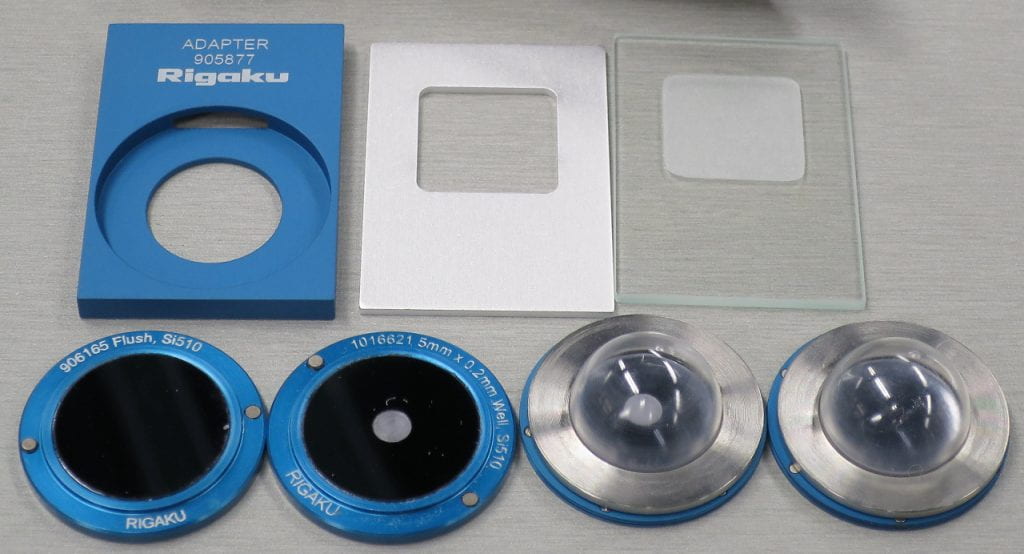
The sample holders again, showing the plastic domes covering the zero-diffraction silicon holders for air-sensitive samples. The caps have O-rings underneath, and are held on by magnets in the blue bases. Don’t believe for a second that they are air-tight, but they can probably keep humidity out for a while.
The diameters of the other two zero-diffraction silicon holders are too large to hold the caps.
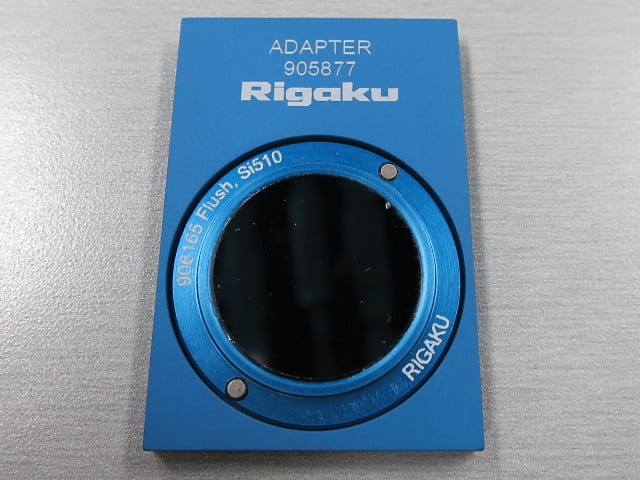
This shows one of the silicon zero-diffraction sample holders in its adapter.
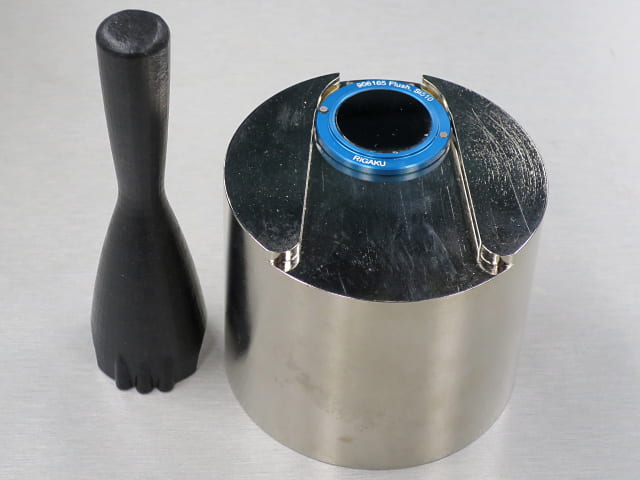
This heavy steel thing can be used to hold the silicon zero-diffraction sample holders while you put the sample on. It can also hold the alumina sample holders used for the Parr 1200 oven.
